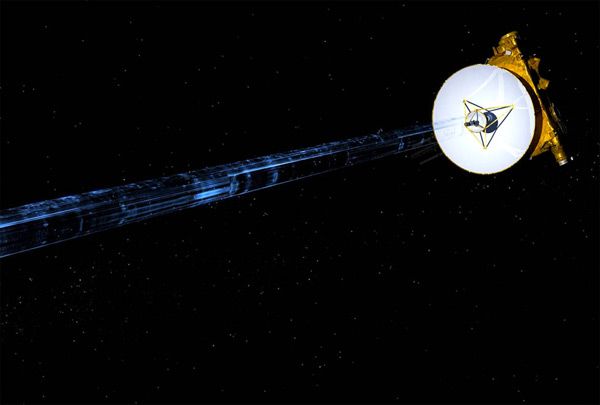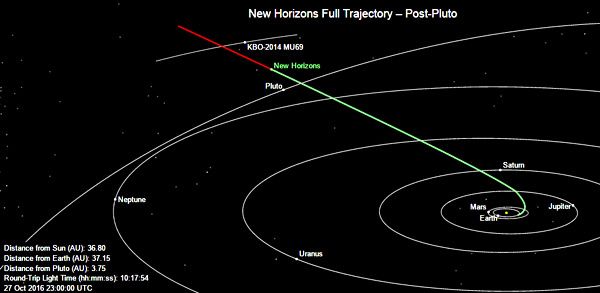
NASA / JHUAPL / SwRI
New Horizons Returns Last Bits of 2015 Flyby Data to Earth (News Release)
NASA’s New Horizons mission reached a major milestone this week when the last bits of science data from the Pluto flyby – stored on the spacecraft’s digital recorders since July 2015 – arrived safely on Earth.
Having traveled from the New Horizons spacecraft over 3.4 billion miles, or 5.5 billion kilometers (five hours, eight minutes at light speed), the final item – a segment of a Pluto-Charon observation sequence taken by the Ralph/LEISA imager – arrived at mission operations at the Johns Hopkins Applied Physics Laboratory (APL) in Laurel, Maryland, at 5:48 a.m. EDT on Oct. 25. The downlink came via NASA’s Deep Space Network station in Canberra, Australia. It was the last of the 50-plus total gigabits of Pluto system data transmitted to Earth by New Horizons over the past 15 months.
“The Pluto system data that New Horizons collected has amazed us over and over again with the beauty and complexity of Pluto and its system of moons,” said Alan Stern, New Horizons principal investigator from Southwest Research Institute in Boulder, Colorado. “There’s a great deal of work ahead for us to understand the 400-plus scientific observations that have all been sent to Earth. And that’s exactly what we’re going to do—after all, who knows when the next data from a spacecraft visiting Pluto will be sent?”
Because it had only one shot at its target, New Horizons was designed to gather as much data as it could, as quickly as it could – taking about 100 times more data on close approach to Pluto and its moons than it could have sent home before flying onward. The spacecraft was programmed to send select, high-priority datasets home in the days just before and after close approach, and began returning the vast amount of remaining stored data in September 2015.
“We have our pot of gold,” said Mission Operations Manager Alice Bowman, of APL.
Bowman said the team will conduct a final data-verification review before erasing the two onboard recorders, and clearing space for new data to be taken during the New Horizons Kuiper Belt Extended Mission (KEM) that will include a series of distant Kuiper Belt object observations and a close encounter with a small Kuiper Belt object, 2014 MU69, on Jan. 1, 2019.
Source: NASA.Gov
****

ABOVE: The green line marks the path traveled by the New Horizons spacecraft as of 4:00 PM, Pacific Daylight Time, on October 27, 2016. It is 3.5 billion miles from Earth. Click here to view the official webpage showing where New Horizons is in space. (AU stands for Astronomical Units, in case you're wondering.)

No comments:
Post a Comment